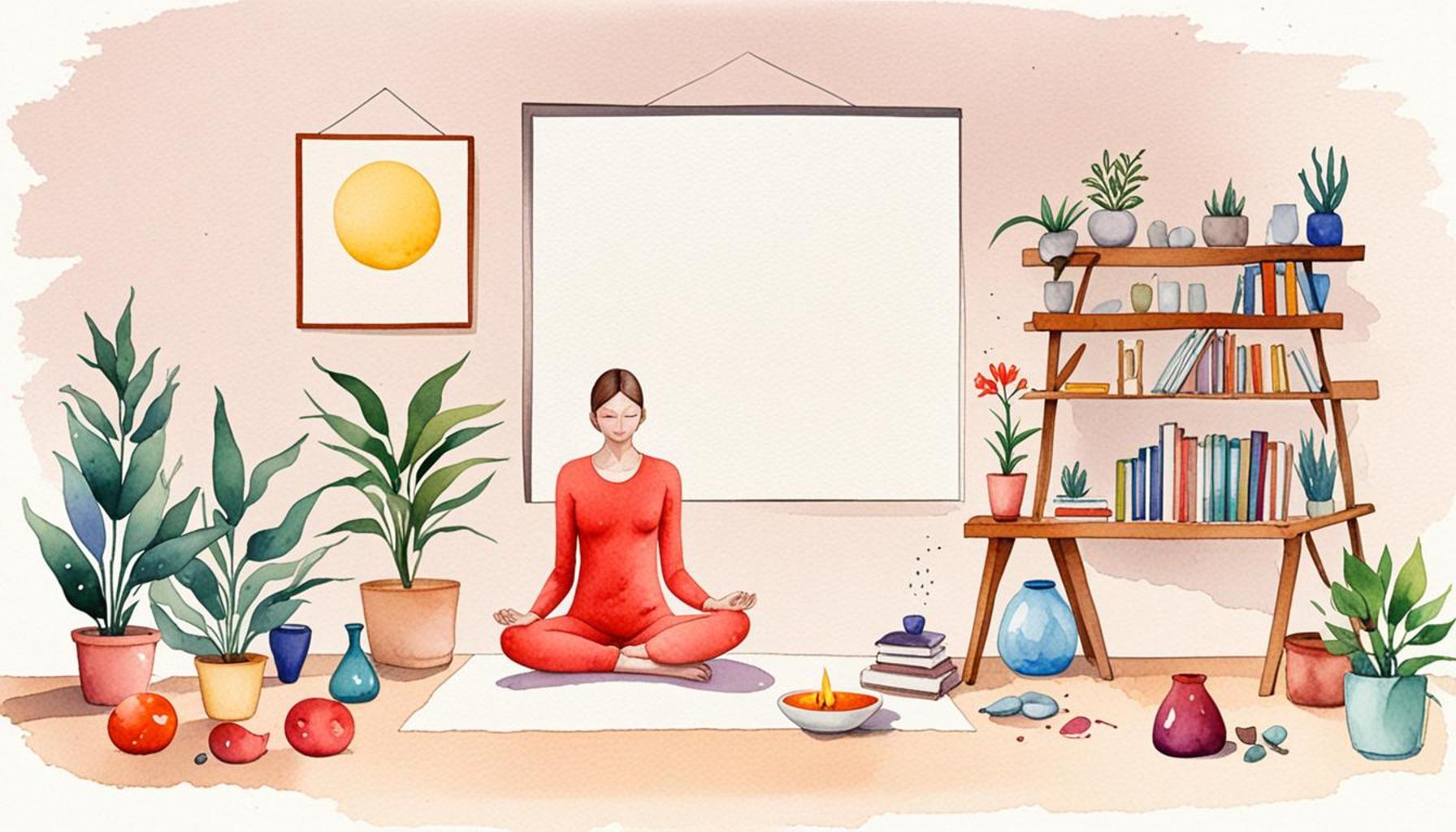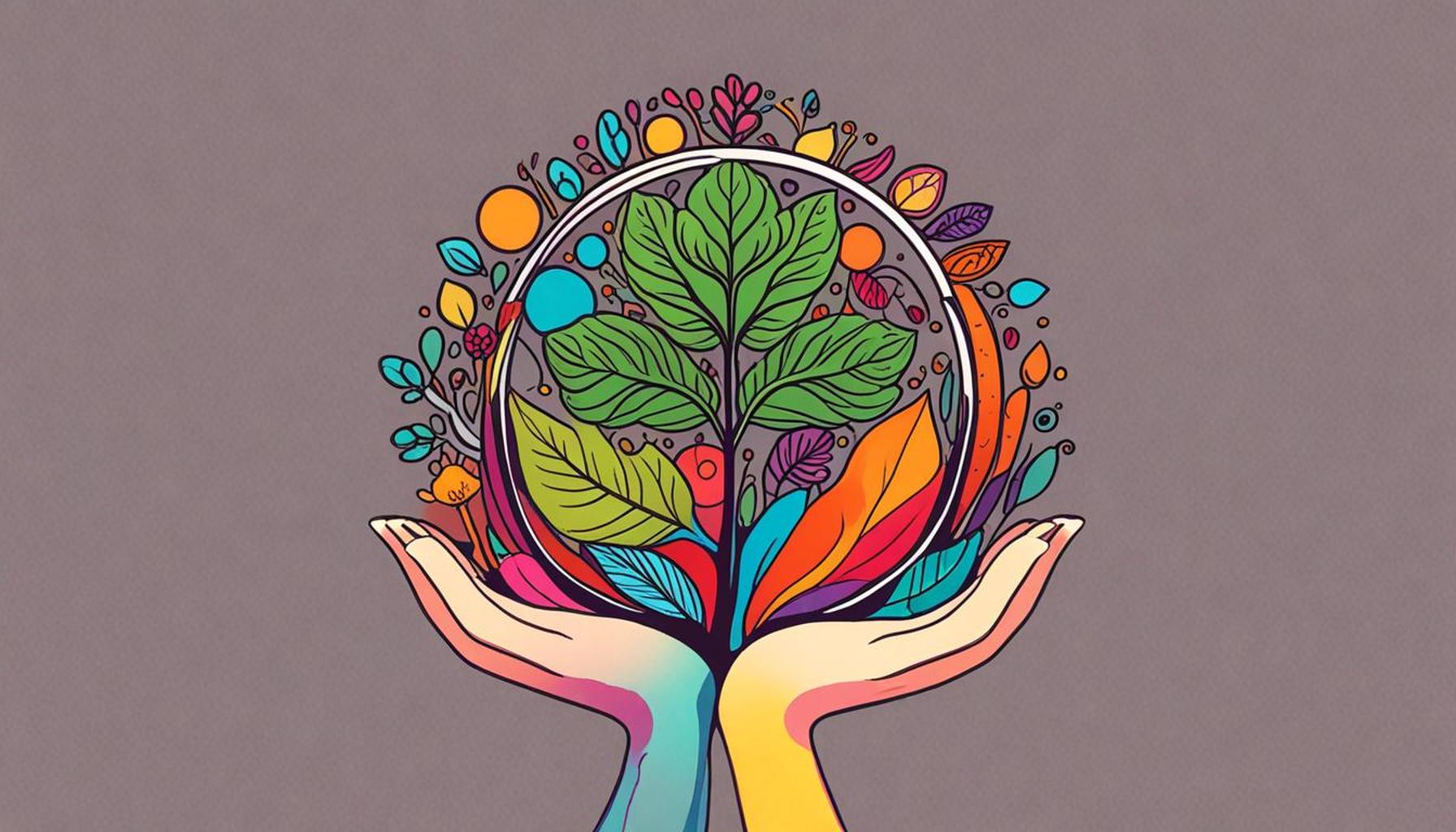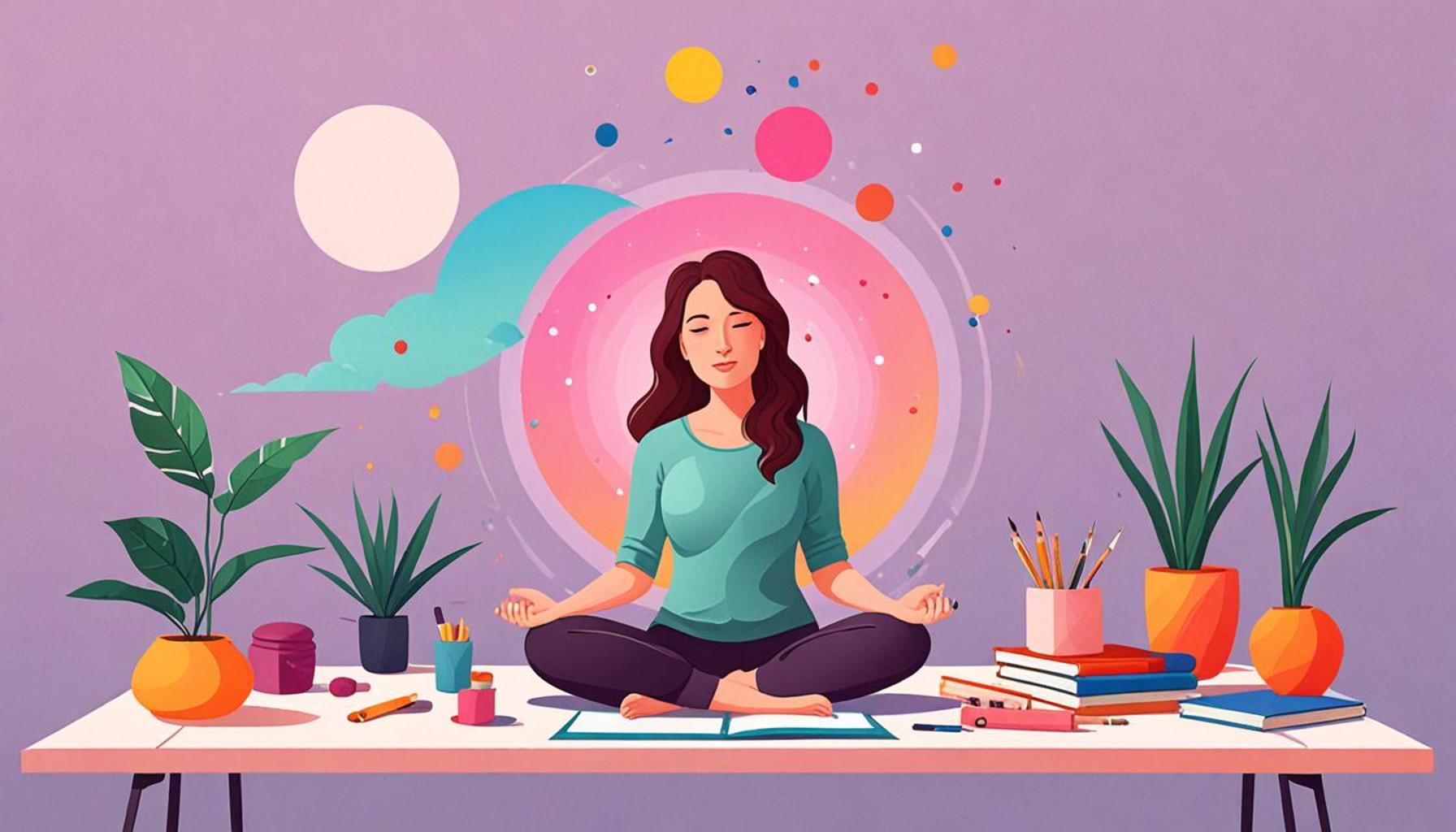The Practice of Mindful Living in Creating a Minimalist Space

The Journey Toward Mindful Living
In an era where technology and obligations dominate our lives, the quest for peace of mind can feel overwhelming. Mindful living is a practice that not only promotes mental well-being but also aligns seamlessly with the modern principles of minimalism. By embracing mindfulness, individuals are equipped to create environments that nurture serenity, inviting a sense of calm into their chaotic lives.
At the heart of mindful living are several core concepts that encourage individuals to curate their surroundings thoughtfully:
- Intentionality: This principle emphasizes that every item in one’s living space should have a specific function or evoke joy. For example, instead of cluttering countertops with an array of kitchen gadgets, consider keeping only the essentials—a beloved knife, a well-used cutting board, and a few favorite spices. This approach not only simplifies the space but also enhances daily culinary experiences.
- Simplicity: By reducing excess, one can foster a clearer and more focused environment. A minimalist closet, for example, can be curated by choosing versatile clothing items that mix and match, making dressing a quicker and more enjoyable process. This contrasts sharply with a wardrobe overflowing with seldom-worn garments, which can lead to decision fatigue.
- Awareness: Practicing mindfulness invites individuals to be present in the moment and fully appreciate their surroundings. Simple acts, such as savoring a cup of coffee or noticing the colors of a sunset, can enhance one’s gratitude and connection to everyday life.
The integration of these principles can profoundly influence your home and overall well-being. For instance, a minimalist home can lead to:
- Reduced stress: By eliminating unnecessary distractions, individuals can find respite from the fast-paced demands of everyday life. Imagine coming home to a peaceful, uncluttered living room where mindfulness can thrive.
- Improved focus: A serene space promotes creativity and personal growth. Artists and writers, for instance, often find that a simplified workspace aids concentration, allowing for deeper engagement in their craft.
- Enhanced clarity: Organizing both physical and mental clutter can lead to a newfound clarity, making room for more meaningful experiences and interactions.
As you delve into the harmonious blend of mindfulness and minimalism, you will uncover a wealth of insights and practical strategies for redesigning your living space. The journey toward a more mindful existence is not solely about decluttering possessions, but also about forging a closer connection to oneself and the environment. Embracing this lifestyle can lead to a richer, more fulfilling experience of life in an increasingly complex world.
DIVE DEEPER: Click here to learn more about mindful living

The Intersection of Mindfulness and Minimalism
Mindful living and minimalism together promote a way of life centered around intentional choices and thoughtful assessments of our belongings. By consciously curating what’s present in our homes, individuals can create a serene atmosphere that not only fosters mental clarity but also enhances emotional health. This exploration provides practical strategies to seamlessly blend these mindful living principles into crafting a minimalist home environment.
Identifying Clutter Triggers
To embark on the journey toward a minimalist space, it is crucial to identify the factors contributing to clutter. Understanding these triggers enables informed decision-making regarding what to keep or release, ultimately leading to a simplified lifestyle. Here, we delve into some common sources of clutter:
- Sentimental items: Sentimentality attaches significant emotional weight to personal belongings. Although it’s easy to become attached to every piece of memorabilia—from childhood toys to travel souvenirs—holding onto too many items can create chaos. Instead, prioritize a few cherished items that truly evoke strong feelings and memories, allowing for a more meaningful collection.
- Unnecessary duplicates: Many households fall into the trap of accumulating multiple instances of the same item, whether it’s kitchen gadgets, clothing, or home decor. Aim to retain only those duplicates that add value or joy to your life. This might mean keeping one favorite frying pan rather than five or creating a capsule wardrobe with versatile pieces.
- Impulse purchases: In a world driven by ever-changing consumer trends, impulse buying can easily lead to clutter. Practicing mindfulness before making purchases provides an opportunity for reflection. Ask yourself if the item aligns with your core values and needs. This practice not only curtails clutter but can also save money in the long run.
Creating Mindful Spaces
Having identified the sources of clutter, the next crucial step is curating spaces that nurture mindfulness and tranquility. Implement the following strategies to redesign your home:
- Designated zones: Organizing your living area into specific zones for various activities can help establish clarity in your environment. Consider creating a cozy reading nook complete with comfort-focused chairs and soft lighting that beckons relaxation. In contrast, a decluttered workspace can enhance focus and productivity, allowing for a better work-life balance.
- Natural elements: Integrating elements from nature—like houseplants, natural lighting, and organic materials—enhances the calming effect of a space. Research indicates that exposure to plants can alleviate stress and improve mood, making them an essential feature in mindful home design. A simple potted fern or a low-maintenance snake plant can significantly uplift the atmosphere.
- Color psychology: The emotional impact of color in your home should not be underestimated. Soft, neutral shades such as pale blues and greens promote tranquility, while vibrant colors like yellows and oranges can invigorate and stimulate creativity. When redesigning your space, consider a mindful approach to color selection that reflects the atmosphere you wish to create.
As you embark on the journey of implementing these practical strategies, remember that a minimalist space extends beyond mere visual simplicity. It’s about nurturing a peaceful environment that cultivates introspection and personal growth. Engaging in this mindful process encourages deeper connections with both oneself and one’s surroundings, ultimately enriching daily life experiences.
| Advantages | Benefits of Minimalist Living |
|---|---|
| Reduced Clutter | Cultivating a tranquil environment promotes mental clarity and focus. |
| Enhanced Mindfulness | Encourages intentional living, allowing individuals to appreciate the present moment. |
| Emotional Benefits | Reduces anxiety through a calm and peaceful living space. |
| Increased Productivity | Simplified environment enables better focus on tasks. |
The practice of mindful living within the concept of a minimalist space encourages individuals to find serenity through simplicity. By consciously curating their environment, people can enhance their creativity and find deeper satisfaction in their possessions. Simplifying life also leads to making more intentional choices, ultimately enriching experiences. Research indicates that a clean and organized space not only fosters greater emotional stability but also improves overall wellbeing. This practice reinforces the idea that less can indeed be more, allowing for a meaningful connection to the material world that transcends mere ownership. Hence, embracing minimalism becomes a pathway toward a more fulfilling, peaceful, and serene existence.
DIVE DEEPER: Click here to learn more
Embracing Sustainability in Mindful Minimalism
Another vital aspect of the mindful living journey within a minimalist framework is sustainability. Adopting practices that are environmentally conscious not only aligns with minimalist principles but also fosters a deeper connection with the world around us. By making thoughtful decisions about our belongings and lifestyle, we can lead a life that prioritizes both simplicity and ecological responsibility.
Conscious Consumption
In the age of consumerism, conscious consumption acts as a counterbalance to the impulse of overindulgence. Mindful living encourages individuals to reflect on how and what they purchase. Consider the following strategies to enhance your consumption habits:
- Quality over quantity: When making purchases, prioritize investing in high-quality, durable items rather than opting for cheaper, low-quality alternatives that may need to be replaced frequently. For instance, select a sturdy wooden dining table that can last for years, rather than a flimsy one that may deteriorate quickly. This approach not only reduces clutter but also aligns with a sustainable lifestyle.
- Secondhand treasures: Shopping secondhand not only saves money but also lessens the environmental impact of producing new goods. Thrift stores and online resale platforms, such as Poshmark or eBay, offer unique items with history. By opting for pre-loved items, you contribute to a circular economy, thus minimizing waste.
- Mindful gifting: When it comes to gifting, focus on experiences or items that foster connection rather than material possessions. Consider gifting experiences like a cooking class, a concert, or a weekend getaway instead of physical items, thereby creating memories without contributing to clutter.
Mindful Maintenance and Care
Once you have curated a minimalist space, it’s essential to maintain it with intention. Incorporating mindful maintenance practices ensures that your environment stays aligned with your values:
- Routine decluttering: Schedule regular intervals for decluttering to prevent accumulation. A monthly reassessment helps ensure that you keep only those items that serve a purpose or bring joy. This practice not only keeps your space simple but supports emotional scale as well.
- Emotional check-ins: As you engage with your space, practice emotional check-ins. Ask yourself how each item makes you feel. If it triggers negative emotions or memories, consider its place in your home. Being attuned to your feelings allows for more conscious decisions about your belongings.
- Cultivating a cleaning routine: Simplify your cleaning routine by using eco-friendly products and tools that reflect your minimalist philosophy. Natural cleaning solutions, such as vinegar and baking soda, can keep your space clean without harsh chemicals, aligning with both mindfulness and sustainability.
The practice of mindful living in creating a minimalist space fosters not only a physical transformation but also a profound internal shift. As you embrace sustainability and conscious consumption, you nurture a lifestyle that supports mental well-being and creates harmony with the natural world. The act of aligning your home and habits with mindful principles ensures that your living environment is a true reflection of your values and aspirations.
DISCOVER MORE: Click here to uncover what truly matters
Conclusion: Unlocking the Potential of Mindful Minimalism
In conclusion, the practice of mindful living in creating a minimalist space transcends mere aesthetics; it embodies a holistic approach to life that harmonizes our values, environment, and well-being. By deeply engaging with our surroundings and adopting sustainable practices, we start to cultivate a lifestyle that emphasizes conscious consumption and ongoing emotional reflection. This journey is not just about decluttering physical possessions but also about emotional and mental clarity.
The principles of mindful minimalism encourage us to deliberately select high-quality items that resonate with us, while also embracing the beauty of pre-owned treasures, thus minimizing our ecological footprint. This conscientious approach fosters a sense of responsibility toward our planet, aligning our personal choices with the greater good.
Additionally, integrating routine maintenance and emotional check-ins into our daily lives allows us to create and sustain environments that evoke tranquility. By fostering spaces that reflect our true selves, we can experience a profound shift in perspective, paving the way for a more focused and fulfilling life. As you venture into this exploration of mindful minimalism, consider the countless possibilities for growth and enrichment that lie ahead. Your journey does not end with a beautifully curated space; it begins there, evolving into a lifestyle that continuously nurtures your spirit and contributes to a sustainable future.


